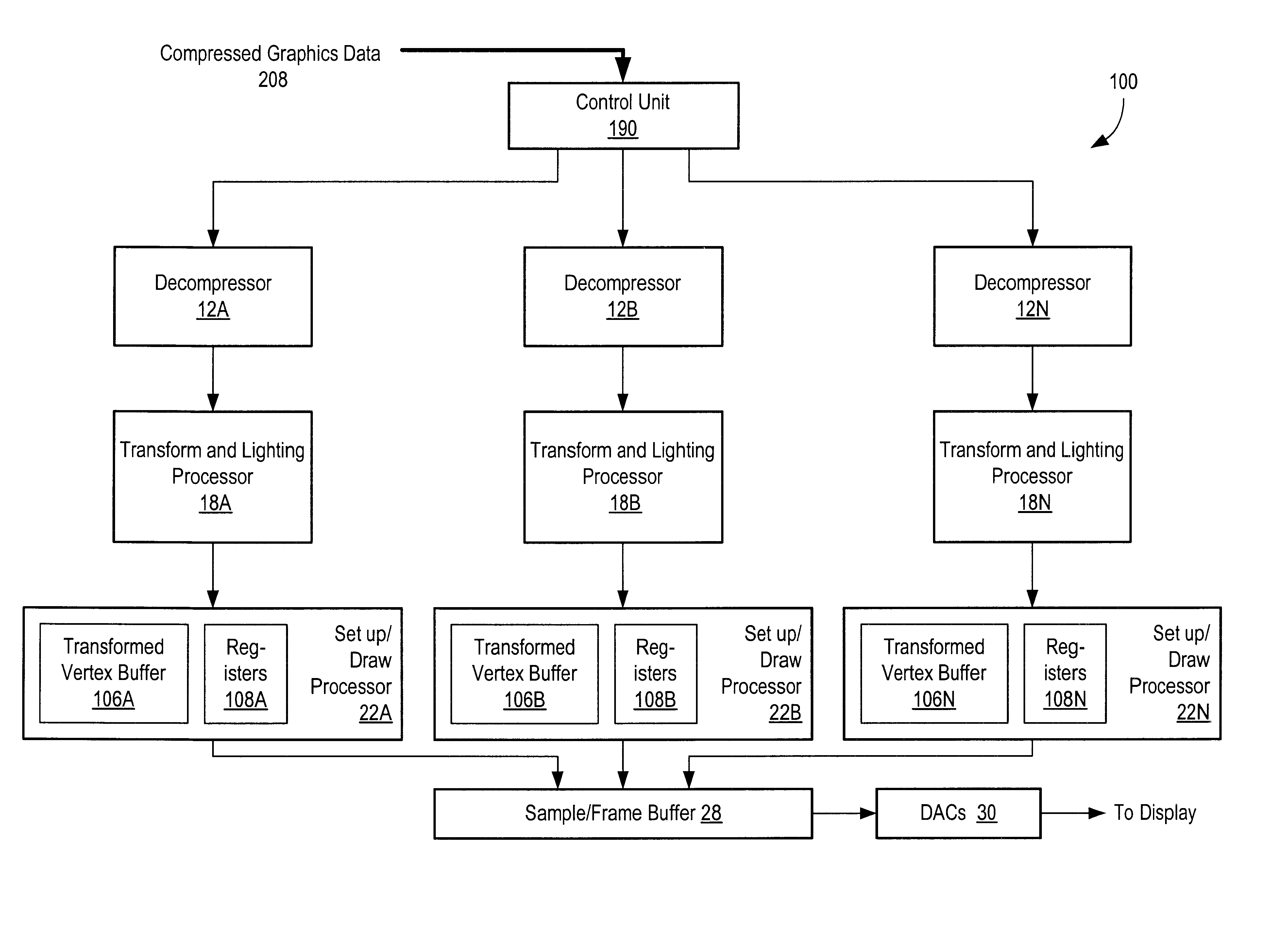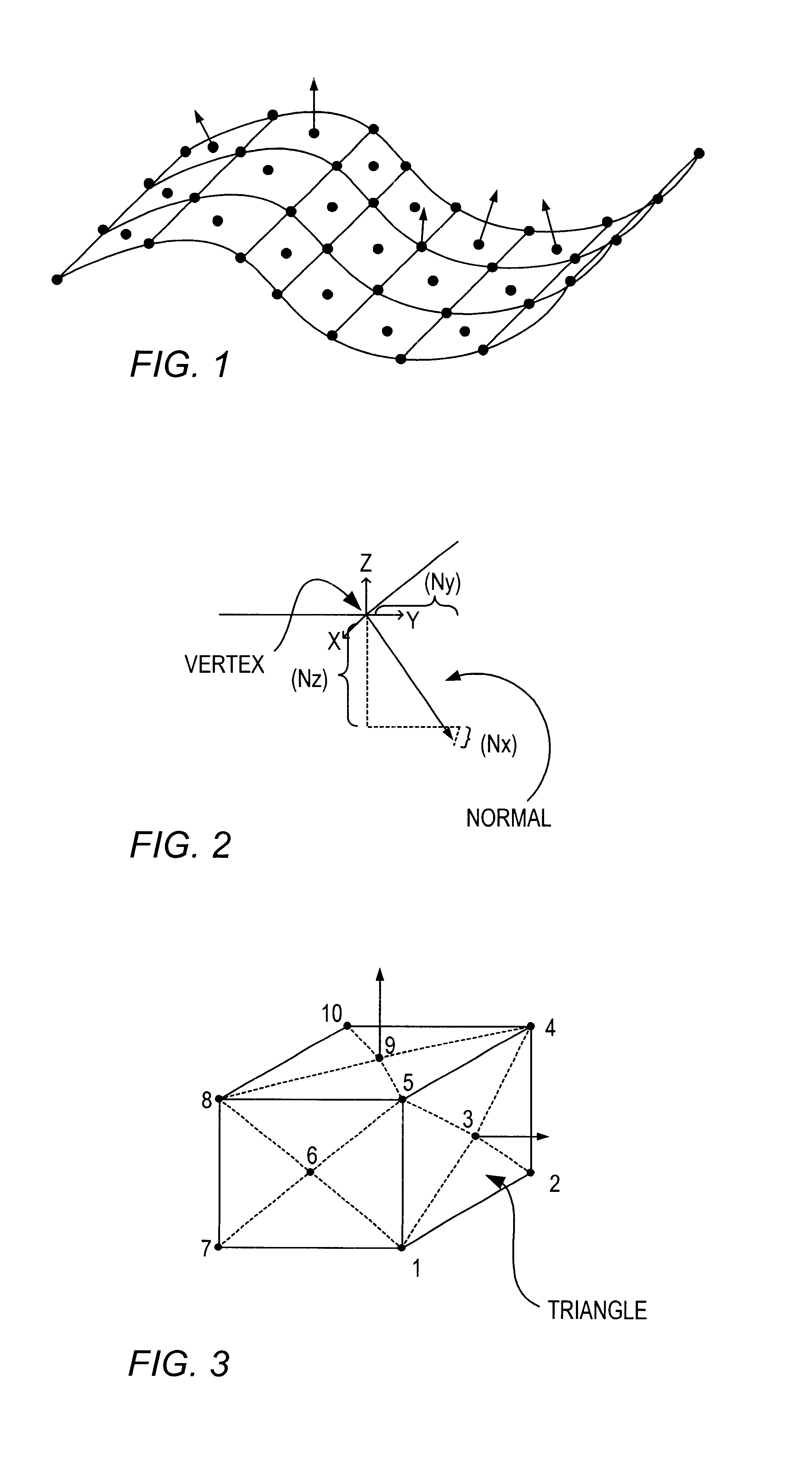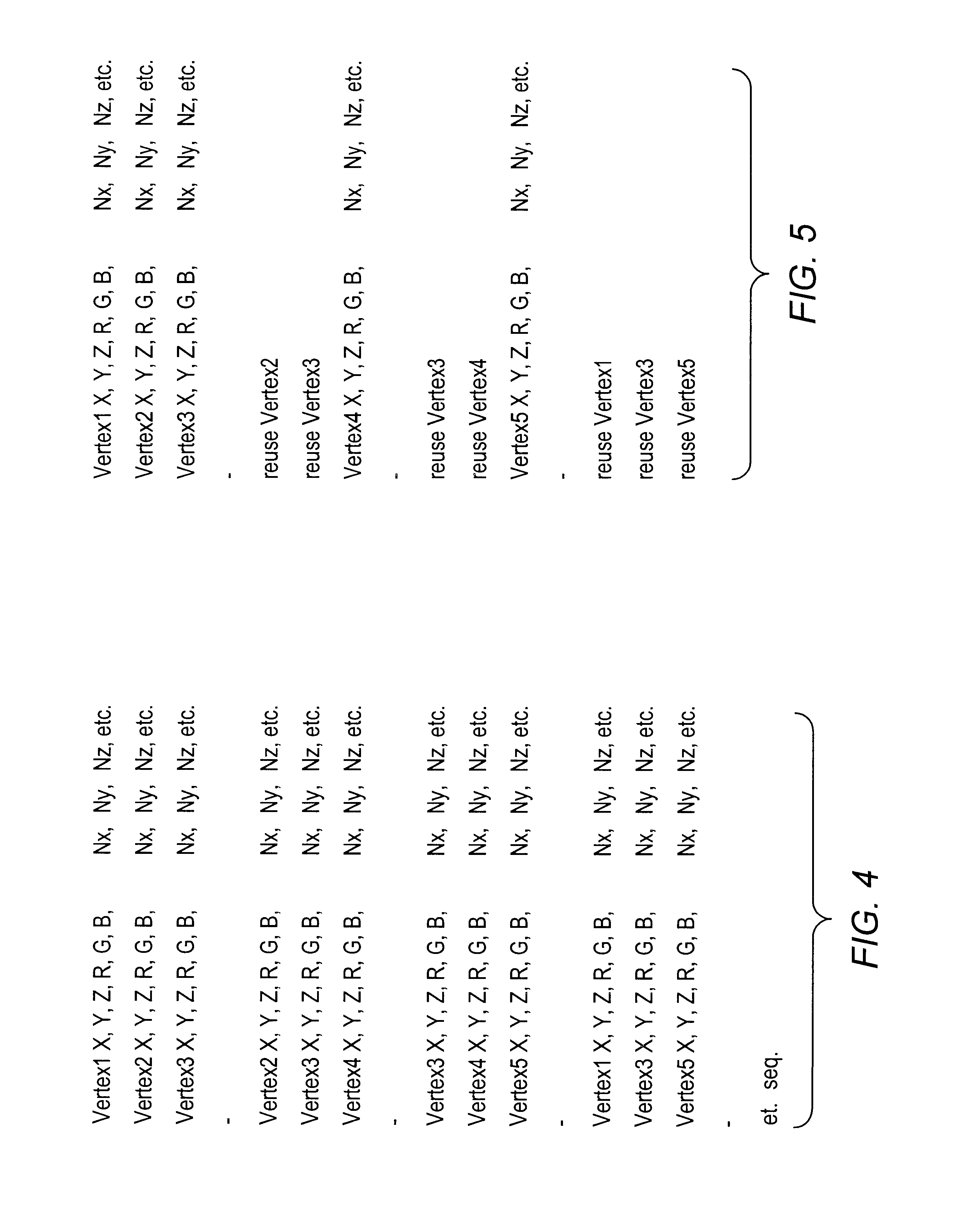Segmenting compressed graphics data for parallel decompression and rendering
- Summary
- Abstract
- Description
- Claims
- Application Information
AI Technical Summary
Problems solved by technology
Method used
Image
Examples
embodiment-- fig.14
Alternate Embodiment--FIG. 14
FIG. 14 illustrates an alternate embodiment of graphics system 100. In this embodiment, instead of utilizing a transformed vertex buffer, set up / draw processor 22 instead utilizes a transformed vertex cache 110. As used herein the term "transformed vertex memory" (also referred to as a "processed vertex memory") includes both transformed vertex buffers, transformed vertex caches, and other memory devices configured to store vertices that are have been transformed from their original coordinate reference frame.
The transformed vertex memory may store vertices that have been subjected to one or more of the following processes: model transformation, view transformation, clip testing, perspective transformation, lighting, texturing, shading, or more complex programmable shading or other processes. These processes may be referred to (individually and collectively) as "vertex processes", and a vertex which has had one or more vertex processes performed on it ma...
PUM
 Login to View More
Login to View More Abstract
Description
Claims
Application Information
 Login to View More
Login to View More - R&D
- Intellectual Property
- Life Sciences
- Materials
- Tech Scout
- Unparalleled Data Quality
- Higher Quality Content
- 60% Fewer Hallucinations
Browse by: Latest US Patents, China's latest patents, Technical Efficacy Thesaurus, Application Domain, Technology Topic, Popular Technical Reports.
© 2025 PatSnap. All rights reserved.Legal|Privacy policy|Modern Slavery Act Transparency Statement|Sitemap|About US| Contact US: help@patsnap.com



